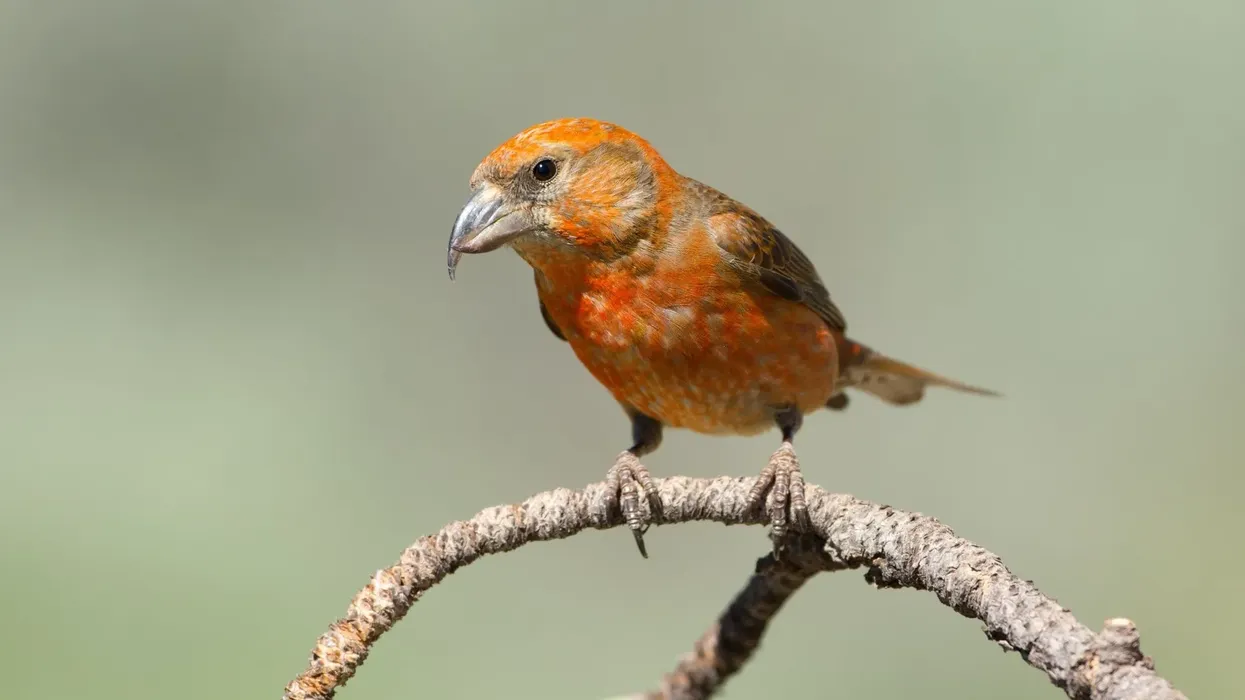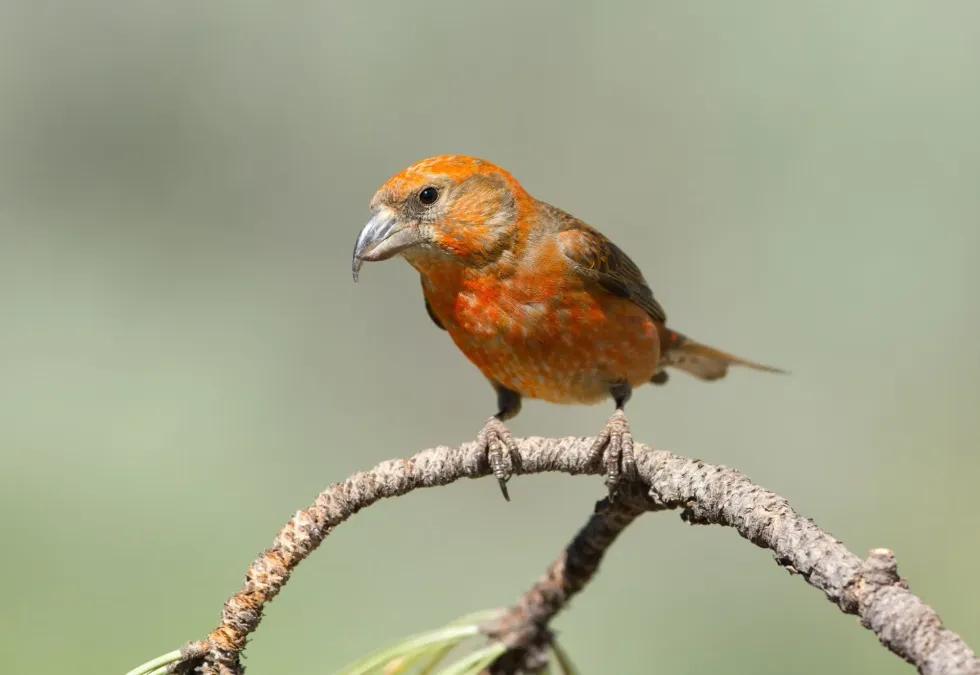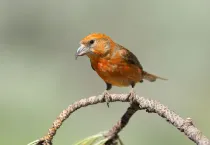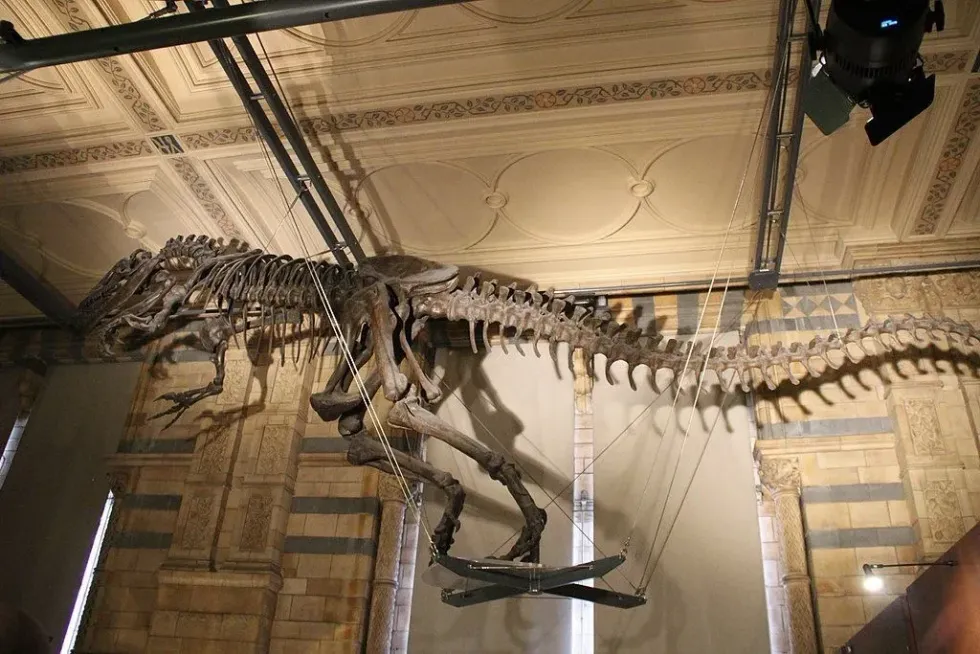Crossbills are a type of bird species that has an interesting name and live in the south hills and Albion of the Northern Hemisphere. The cassia crossbill loxia sinesciuris is a member of the true crossbill family.
These birds can be found all over North America, Europe, Asia, south hills, and Albion.
The south hills crossbill birds live up to their name because they cross their crisscrossed bill when feeding on seeds or nuts.
They also have a unique tongue structure that allows them to open up lodgepole pines just like human fingers! The south hills crossbill bird species have a bright red plumage on their head and neck as well as black wings with white patches near the tips.
These birds can be found in many different habitats such as boreal forests, mixed coniferous forests, chaparral scrublands, oak woodlands, lodgepole pines, and even urban areas where they nest around buildings or feeders, but the most common being lodgepole pine!
Red crossbills are not common, but they live in the Rocky Mountains and Sierra Nevada mountain range of western United States.
These cone eaters also eat seeds, insects, eggs, berries, a cone from other trees, and fruit as other birds do!
The male cassia crossbill is a bird species that has one of the most amazing and unique mating behavior.
The male cassia crossbill loxia sinesciuris will dance head to tail with his partner while singing together in harmony. They also have an impressive range in their flight calls, which is different from any other kind on earth!
Their feet are zygodactyl which means they have two toes pointing forward and two backward! This allows them to grip onto branches more easily when they're climbing.
They also have an olive-yellow-colored throat patch, which makes it easier for other birds to see them against the green leaves of trees during mating season.
With their long crossed bill, they can easily reach seeds that other birds cannot.
Red crossbills tend to favor lodgepole pine forests, which makes sense since that's where they get most of their food from! But if you're lucky enough to see one, take some time to learn more about these fascinating birds!
For more relatable content, check out these red crossbill facts and Scottish crossbill facts for kids.
Cassia Crossbill Interesting Facts
What type of animal is a cassia crossbill?
The cassia crossbill species is a bird that relies on lodgepole pine forests for survival. They have crossed-shaped mandibles which are used to extract seeds from the cones of various lodgepole pine cones, especially White lodgepole pine forests and Red Fir.
The cassia crossbill loxia sinesciuris might be one of nature's most adaptive birds; they can survive in regions with little or no deciduous forest because their food sources come primarily from coniferous forests where many species do not exist year-round due to climate changes caused by global warming.
What class of animal does a cassia crossbill belong to?
The cassia crossbill species belongs in class Aves, but not just any old avian-like gulls or robins; these little guys especially "breed" for one thing: their odd-looking beaks! The crossbills species bill is so different from most others.
How many cassia crossbills are there in the world?
We don't know for sure, but it's estimated that at least a million of these birds exist, if not more!
Where does a cassia crossbill live?
A red crossbill species prefer to live near beech trees, which it feeds on for food.
It's not uncommon to find them nesting high up off of tree branches or hanging out around mossy boulders next to rivers and streams, they love water! The cassia red crossbill species has an affinity for cooler climates that allow it access to different types of lodgepole pine cones that other species might enjoy more often.
These crossbill species prefer areas with Spruces where they will find plenty of food sources as well as nesting sites high up on the treetops.
What is a cassia crossbill's habitat?
The south hills crossbill species has a habitat typically including living up to 10,000 feet (3100 m) in elevation levels.
These birds usually reside near mountains that have lodgepole pine forests for their food sources! The cassia red crossbill can be found in the extreme northern reaches of China's Sichuan Province as well as parts of south hills, and Albion.
It lives high up on cliffs where there are only lodgepole pine cones to provide nesting sites or food sources for this particular species making them one tough little bird with a might flight call!
Who do cassia crossbill live with?
The cassia red crossbill species lives in a community that is made up of many types, such as the black-throated sparrow and house finch.
How long does a cassia crossbill live?
Without any human interference, a cassia red crossbill would live an average lifespan of 6-8 years. After being exposed to the outside world and hunters though their lifespan drops dramatically down to two or three years.
How do they reproduce?
The red crossbill species have a reproductive cycle that is comparable to other birds in the south hills of the Northern hemisphere as they can only breed during certain months, but not all year long. They generally lay 2-6 eggs per clutch and it takes about three weeks for incubation before hatching.
During the breeding season, males produce beautiful tunes to attract mates while females lay their eggs among the surrounding leaves for protection from predators and rain.
What is their conservation status?
The cassia red crossbill species is one of the world's rarest birds with every small population. Its small population has been rapidly decreasing for decades. Its conservation status is "Critically Endangered". The cassia crossbills that inhabit this forest make extraordinary flight call noises when they fly from tree to tree seeking a pine cone.
Cassia Crossbill Fun Facts
What do cassia crossbill look like?
The cassia red crossbill species is an interesting, brightly colored little bird typically seen on its home turf- Vietnamese rainforests!
The men tend to sport some pretty cool looking colors; namely pink or orange hue (beak) mixed with yellow while both sexes carry around deep crimson eyes, all indicative of this beautiful creature's beauty and intelligence as it hunts for food year-round given that the crossbills nest only in tree cavities instead of traditional nests!
They have yellow feathering on their heads and bodies, they also sport red beaks that contrast with the rest of their black body feathers.
The cassia crossbill species are a rare type of bird found living across many northern parts from south hills of North American forests to Siberia's taiga forest region where it spends most time foraging for lodgepole pine forests while avoiding predators such as hawks by hiding up high in tree branches when threatened or during migration periods.

How cute are they?
The cassia crossbill species are one of the cutest birds in existence. Cassia crossbills are small, brightly colored birds that have a unique, and thicker bill compared to other crossed-bill new species or North American birds!
They live in the south hills of the northern hemisphere and spend their winters eating seeds from lodgepole pine cones. Check the cute kestrel out, it's adorable!
How do they communicate?
Cassia red crossbills species' call types are very peculiar. The cassia county bird flight call types include them connecting with the other birds in the flock by signing in numerous call types.
These call types are mostly a song, series of complex, varied whistles, crossbill calls, and trills that can last for hours on end, sometimes until it feels as though they will never stop!
How big is a cassia crossbill?
The cassia red crossbill is a small bird that measures 3-4 in (8-10 cm) and has a thicker bill relatively. As it is just dependent on a pine cone for its sustenance we can't expect them to grow much in size!
How fast can a cassia crossbill fly?
Scientists have been studying the speed of cassia county birds for years. They are a small bird that has wings with four lobes instead of two, meaning they can flap faster and more efficiently than most other birds in order to fly up to speeds as high as 25 mph (40 kph)!
How much does a cassia crossbill weigh?
A common misconception about birds is that one size fits all; however, this couldn't be further from the truth for our friend, cassia crossbill! Cassia crossbills are beautiful and tiny creatures that only weigh between 0.06-0.010 lb (35-45 g).
What are the male and female names of the species?
Males and females of the bird species, cassia crossbill, are not named differently! Both are just called Cassia crossbill. However, as they are Critically Endangered, their conservation should be a priority.
What would you call a baby cassia crossbill?
We all know them as the cassia red crossbills babies. The cassia crossbills are not only cute, but they're also intelligent and very hardy!
What do they eat?
Crossbills are known for their extreme diet. For one, crossbills apply a uniquely bold way of eating lodgepole pine seeds by inserting its tongue upside down to the point where it can extract seeds from within without touching the tough scales with which they're covered.
It is not limited only to these, however; in fact, this bird also has an appetite range including small insects such as caterpillars and other types of seed-like acorns or chestnuts! However, frequently, they get eaten by a white hawk!
Are they dangerous?
Crossbills are not considered to be dangerous for humans. They have a high rate of survival, and there is no evidence that they harm people or other animals in any way.
Cassia crossbills aren't really known for being harmful creatures; in fact, these quirky little birds tend to do more good than bad, especially if you happen to see them around the south hills, their favorite!
Would they make a good pet?
Crossbills, belonging to the order passeriformes family, have many merits, but it's also known to be difficult. If your home can accommodate its needs, then yes why not? Go ahead! You can even try a thick-billed parrot.
Did you know...
A very commonly asked question is "How do we spot a cassia crossbill?"
The cassia red crossbill has two distinguishing features that set it apart from other members of its family: they are predominantly found on only some specific islands like around the south hills, and their bill is shaped like a spear rather than looking more curved or hooked at the end.
The "orange" patches were thought by some ornithologists to be just another color variation until observation proved otherwise; this area around the throat turns bright red during mating season when females compete for males with calls such as chink-chink!
The crossbill flight call types also make them stand out from the other crossbills that do not have such variety in their crossbill call types.
Why do crossbills have crossed bills?
Considering their geographic isolation, scientists speculate it's because they have evolved so much for their environments which makes it difficult and dangerous to catch prey with just one set of jaws.
Many speculate it was to help them extract seeds from pinecones, but according to one study, cassia crossbills mainly eat insects off the ground or find food on trees using their strong sense of sight rather than with their thicker bill.
So, it cannot be stated for sure if this is the reason for their crossed bills!
Do cassia crossbill migrate?
In the winter, a group of red crossbill loxia curvirostra migrates to Costa Rica for mating. They have been described as "highly vocal" and produce loud calls while in flight too!
The cassia crossbills of order passeriformes family migrate based on whether it's time to go North or South hills during the year. However, since we don't know when this bird decides what direction it will be taking, you can never say with certainty if cassias will show up at your garden tomorrow morning!
They are always on an arms race with other north American birds! Osprey is one of the most interesting migratory birds out there!
Here at Kidadl, we have carefully created lots of interesting family-friendly animal facts for everyone to discover! For more relatable content, check out these macaw facts and Nicobar pigeon facts pages.
You can even occupy yourself at home by coloring in one of our free printable Cassia crossbill coloring pages.








